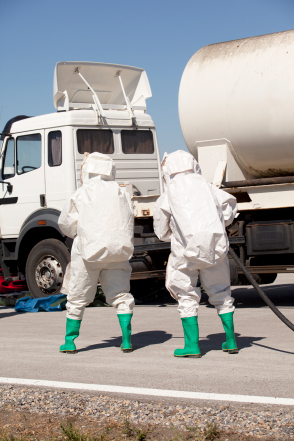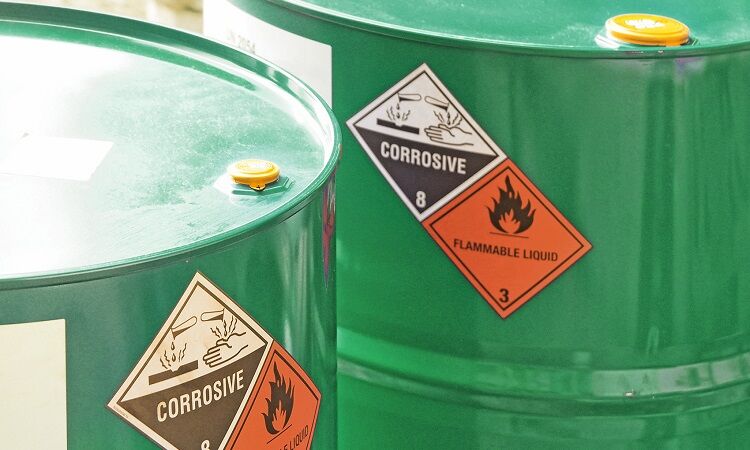Trustworthy Liquid Waste Disposal Melbourne: Safe and Effective Solutions
Wiki Article
Exactly How Liquid Garbage Disposal Functions: A Thorough Review of Methods and Technologies Employed

Introduction of Fluid Waste Kind
The intricacy of fluid waste kinds requires a detailed understanding of their characteristics and implications for disposal. Liquid waste can extensively be categorized right into numerous types, including commercial, local, farming, and dangerous waste. Each classification displays distinct residential properties, requiring particular management methods to reduce environmental and health risks.
Industrial fluid waste stems from producing procedures and often contains a series of pollutants, such as heavy metals, solvents, and natural substances. Community fluid waste, largely consisting of wastewater from homes and commercial facilities, consists of raw material, nutrients, and microorganisms (industrial wastewater treatment). Agricultural liquid waste, consisting of runoff from ranches, may include plant foods, pesticides, and pet waste, posing risks to water top quality and ecological communities
Unsafe liquid waste is characterized by its poisoning, reactivity, or potential to trigger harm. This classification includes substances like acids, bases, and specific chemicals that necessitate rigid handling and disposal protocols. Recognizing these diverse liquid waste kinds is critical for establishing effective disposal approaches and guaranteeing compliance with ecological regulations. Appropriate category and characterization are crucial for executing ideal treatment methods and decreasing the negative effect on public health and the setting.
Physical Treatment Techniques

Testing is the initial step, where bigger particles and particles are gotten rid of from the liquid waste utilizing displays or grates. In sedimentation tanks, larger fragments resolve at the base, creating a sludge layer, while the made clear fluid can be additional dealt with.
Filtration is one more crucial approach that involves passing the liquid with permeable materials, such as sand or membrane layers, to catch smaller particles. This step enhances the top quality of the liquid, making it suitable for succeeding therapy procedures.

Chemical Treatment Methods
Chemical treatment strategies are essential for properly handling fluid waste, specifically in resolving dissolved and colloidal impurities that physical methods might not properly remove. These techniques utilize various chemical agents to counteract, precipitate, or change dangerous substances right into less dangerous forms.One common approach is coagulation and flocculation, where chemicals such as alum or ferric chloride are added to advertise the aggregation of suspended bits. This process boosts sedimentation, enabling for less complicated removal of the resulting sludge. Furthermore, oxidation procedures, using representatives like chlorine or ozone, are utilized to break down complicated natural substances and microorganisms, making the waste more secure for discharge or more therapy.
Neutralization is an additional critical strategy, which changes the pH of acidic or alkaline waste streams to neutral levels, avoiding potential injury to downstream systems and the atmosphere. Moreover, progressed oxidation procedures (AOPs) utilize combinations of oxidants and ultraviolet light to deteriorate relentless pollutants, accomplishing a higher level of treatment effectiveness.
Organic Treatment Processes
Biological treatment processes play a vital function in the administration of fluid waste by utilizing microorganisms to disintegrate organic issue and decrease pollutant levels. These processes can be extensively classified into anaerobic and aerobic therapies, each using details microbial areas to achieve efficient waste deterioration.Cardiovascular treatment includes making use of oxygen to facilitate the break down of natural products by microorganisms. This procedure is generally applied in turned on sludge systems, where aeration storage tanks provide a conducive setting for microbial development, bring about the oxidation of organic pollutants. The resultant biomass can be divided from dealt with effluent via sedimentation.
In comparison, anaerobic treatment occurs in the lack of oxygen, counting on different bacteria to break down raw material. This method is particularly useful for high-strength waste, as it produces biogas, a sustainable energy resource, while check this site out minimizing sludge production. Technologies such as anaerobic digesters are regularly utilized in commercial and municipal applications.
Both anaerobic and cardiovascular organic treatments not only minimize the environmental impact of fluid waste however likewise promote source recuperation, making them crucial parts of lasting waste monitoring strategies. Their efficiency, effectiveness, and adaptability sustain their widespread execution throughout various markets.
Arising Technologies in Disposal
Ingenious strategies to fluid waste disposal are quickly evolving, driven by improvements in modern technology and a raising emphasis on sustainability. Amongst these arising innovations, membrane bioreactors (MBRs) have gained grip for these details their capability to combine organic therapy with membrane layer filtering, resulting in high-quality effluent that can be reused in different applications. MBRs make it possible for smaller footprints and more efficient procedures compared to typical systems.One more appealing growth is using anaerobic food digestion incorporated with nutrient healing technologies, which not just treats liquid waste but likewise generates biogas and recoups beneficial nutrients like nitrogen and phosphorus. This double advantage enhances source performance and reduces environmental effect.
Additionally, advanced oxidation processes (AOPs) are being taken on for the deterioration of intricate natural contaminants. These methods make use of powerful oxidants and drivers to damage down impurities at the molecular level, offering an extremely reliable option for challenging waste streams.
Furthermore, the assimilation of expert system and machine knowing in waste management systems is enhancing functional effectiveness and predictive upkeep, bring about minimized prices and enhanced ecological conformity. These technologies show a substantial shift in the direction of more lasting and efficient liquid garbage disposal methods.
Final Thought
In verdict, effective fluid waste disposal necessitates an extensive understanding of numerous strategies and innovations. By continually advancing these techniques, it becomes possible to address the expanding obstacles linked with liquid waste, inevitably contributing to environmental security and resource recovery.Liquid waste disposal is a crucial element of ecological monitoring, calling for a comprehensive understanding of various strategies and technologies customized to different waste types. Liquid waste can generally be categorized into several kinds, consisting of industrial, municipal, farming, and harmful waste. Agricultural their explanation fluid waste, including runoff from farms, may consist of fertilizers, pesticides, and pet waste, posing threats to water top quality and environments.
Different physical therapy techniques play a vital function in handling liquid waste efficiently - industrial wastewater treatment.In conclusion, effective fluid waste disposal demands a comprehensive understanding of numerous methods and modern technologies
Report this wiki page